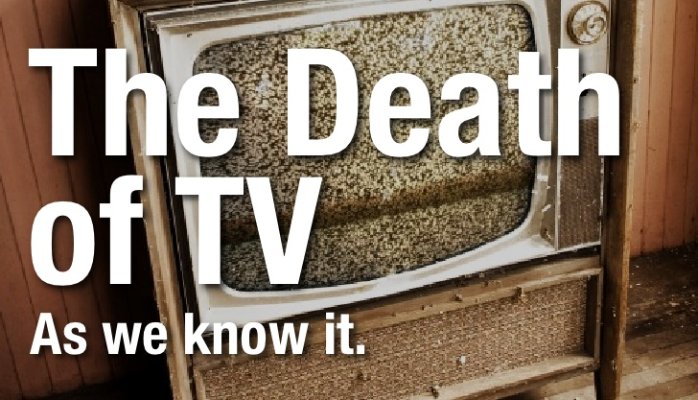We're continuing our scrutiny of television advertising and its effectiveness in today's digital world. Some people say it's lost its sizzle thanks to digital and cord-cutters. Others say we're headed for the new golden age of television.
We'll let you draw your own conclusions, but we can tell you this: we're working with auto dealers all over the USA and Canada who continue to invest heavily in broadcast television and cable advertising. And they're still seeing results. Yes, it's true... TV still drives traffic and builds brands on the Tier 3 level.
Don't ignore digital...in fact, you'd be crazy not to fully embrace it and all the data that comes along with it. But to get the data, you need the clicks. And to get the clicks, you need reach and frequency, which is what TV and radio still deliver, month in and month out.
Adam Armbruster published this article about the death of TV. It's been predicted many times over the years, but strange thing... it's still around...

The Death of TV. Oh, that again? Sigh.
Here are the "many near death experiences" of broadcast television. Lets review:
1. Cable TV: Cable TV was supposed to take down broadcast TV. What actually happened? The highest viewership on ad supported cable networks was and in may cases still is (surprise!) off-net syndicated programming. Now cable struggles for viewers as their niche audiences quickly move on line and to mobile. Cord cutting becomes a phrase.
2. VCR: Death by VCR, after all who would ever watch live TV when you could record it and watch it later and zip all of those annoying ads? Fast forward to millions of flashing 12's on VCR clocks for real proof of performance. Broadcast TV continues to roll.
3. New Broadcast TV networks: Surely the "Big 4" would fail once WB,CW,My TV and other invaded their space. No, in fact some of the hottest programming on additional broadcast networks is often (surprise!) off-net syndicated programming. New networks found their place and still local broadcast TV rolls on.
4. YouTube: Who would ever watch local TV again if every video and every TV show was streamed for free to their laptop? Apparently many. Once piracy laws found YouTube the programming became less about copyrighted material and more about homegrown video. Now its a great music service too. Meanwhile...Local TV continues its importance in the community.
5. DVR: Death by DVR, after all who would ever watch live TV when you could record it and watch it later and zip all of those annoying ads? Sound familiar. NSI 2015 reports TV is still about 90% live viewed by all key demographics, yes even, A18-49. Seems the new DVR is the same old VCR? DVR's create audience.
6. Live Streaming: Who will ever watch on a 60" TV when all of your video and content is streamed live to a 5" screen you can hold in your hand? Well many will, and they will also watch live "big screen" broadcast TV and "delayed" broadcast TV recordings as well.
Bottom line. As we add screens we don't "Kill TV". What we do is provide more screens to provide content, news, back stories and whatever people want fast. Why should anyone think that the incumbent broadcast TV has to lose to this trend when they actually are embracing it?
Broadcast TV has scale, and mass scale wins advertisers. (And yes, Google advertises heavily on national broadcast TV.)
So maybe it isn't about the death of TV. Maybe it's about broadcast TV's birth.
Bet on broadcast.
Original article: https://www.linkedin.com/pulse/oh-again-sigh-adam-armbruster


